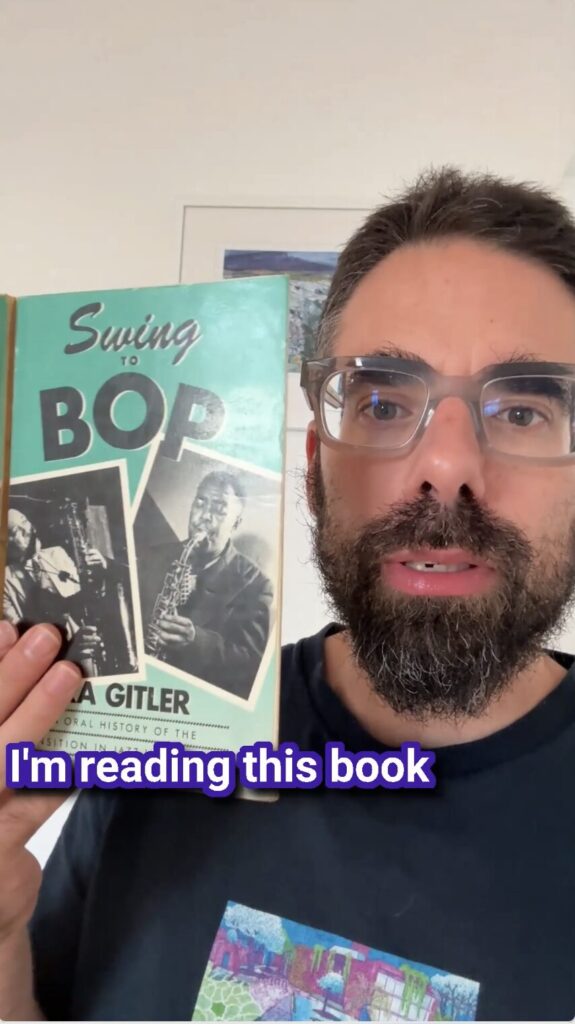Shawn Reynaldo (music journalist, writes the Substack “First Floor”) wrote in his newsletter today:
“The music industry’s supposed summer slowdown is a myth. My Instagram feed might be full of people jetting off to foreign lands and frolicking on sun-soaked beaches, but my inbox is as full as ever”
So, it seems there’s no let up to the constant bombardment of press and DJs inboxes with new releases that artists send them in the hopes of getting even a flicker of notice in an increasingly saturated scene… Most releases just won’t get heard. Except by whoever made them and maybe a few of their friends.
I used to think this was sad, maybe a bit of a shame… if only it was like in the beforetimes, waaaa. But like what exactly? If you were lucky in the 90s and you found a label to press up your tracks and your record sold 1000 copies you MIGHT have gotten a few gigs out of it… and then what? I would say not much more than a handful of techno producers made a really sustainable, long term career out of it.
So let me take a brief detour from this topic. I’m currently rereading the fantastic book Swing to Bop by Ira Gitler, a collection of anecdotes from jazz musicians who were around during the transition from the Swing Era (1930s) to the bebop era (1940s). You MIGHT (if you’re a serious jazz afficionado like moi) recognize SOME of the names of the musicians who were interviewed for the book, like Milt Hinton, Kenny Clarke, Dexter Gordon… but there are many, many more who you most likely won’t have heard of (I haven’t, anyway, and I’m a… you know!).
And then one of them (Buddy de Franco in this case) will say something like:
“When I was in Charlie Barnet’s band it included people like Al Killian, Pete Candoli, Joe Triscari, Trummy Young, Oscar Pettiford, Chubby Jackson, Ralph Burns, Peanuts Holland, Howard McGhee, Neil Hefti – you could go on and on. All heavy players in this business.”
Even serious jazz afficionados of today won’t recognize all those names (unless they specialize in 1930s big band jazz. Maybe not even then!). In the book there are many, many more examples of musicians talking about musicians, who are often forgotten about nearly 100 years later. Sometimes they’ll talk about musicians who were very influential at the time but died young, or never made a name for themselves. For example:
Ira Gitler –“There was a trumpeter, Buddy Anderson. There are only a few short solos on some of his records, but everybody has talked about him as being influential.”
Jay McShann – “Buddy was quite influential. He just never received – Buddy was sickly, but he had it. He just didn’t have the chops to do everything that he knew. He had it together. Dizzy, the time when Diz used to come to Kansas City with Cab Calloway, he would go down and get Diz, and he says, ‘Come on, son, get your horn, I’m gonna take you over to the hotel’ And they would go there and jam. That was Diz’s man. Yeah.”
It was Buddy Anderson who introduced Bird and Diz in Kansas City. I’d be surprised if many jazz musicians these days know the name Buddy Anderson unless they recently read Swing to Bop!
Anyway, why am I talking about bebop in the 40s and what’s that got to do with the amount of electronic music releases coming out right now?
Hear me out… Swing to Bop paints a picture of an extremely vibrant jazz scene. Big Bands were touring all across the States… there were hundreds of venues to play at… after hours jam sessions in many many cities… thousands upon thousands of musicians. Out of all of those bands, gigs, and jam sessions, grew some names that won’t be forgotten as long as great music is known: Bird, Diz, Monk, Charlie Christian, Bud Powell, Miles Davis etc.

BUT that’s a very little small tiny percentage of all the musicians working in those years, the majority of them being all the Buddy Andersons and Joe Guys and Curly Russells and so on and so on…
Now, if you were around in those years and you were a musician, would you be complaining about how many good musicians were around? “Oh dang, I can’t get a job, there’s too many good musicians around, and they’re all better than me boo hoo”. Or would you hit the woodshed, practice and get work knowing there was a hell of a lot of gigs going on every night?
Ok, so nowadays there are tons of musicians, musicmakers, releases, and gigs of all kinds… but unfortunately some gigs are paying literally only 2-5 times what they were paying in 1941! (a good gig could pay $30-$50 back then) whereas rent is 30+ times more than what it was back then (average monthly rent in 1942 was $32).
But apart from the abysmal financial situation, if we just look at the culture of music, and musical progress, then the outlook is rosier I believe. Lots of releases = lots of musicmakers. Are they bouncing ideas between each other, creating scenes, stimulating innovation? Sometimes, sure!
And will most releases go the rubbish dump of time and be forgotton? Mostly, sure!
But will some emerge as the music of the future? Even 10 or 15 years from now? Sure!
(see my recent video about the D1 released Fatima Yamaha track “What’s a Girl To Do” which stayed in underground obscurity for 11 years until it broke out and became a massively popular internet hit – https://youtu.be/q3WUbkjsffw?si=yfb55ka8kI95PuZI)
So I’m not pessimistic about the fact there are loads of releases coming out. There are people looking for great music. People like Kota, the Japanese music journalist who interviewed me recently here.
There’s my bit of optimism for the day done.
Thanks,
Bye!
ZOiD
